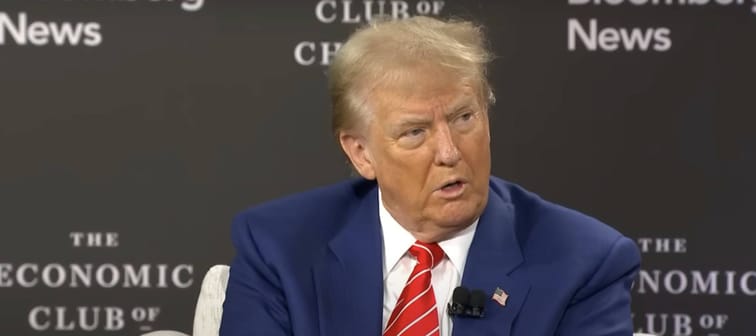Preventing ‘the end of everything’
Trump specifically targeted the automotive industry as an example of how he plans to use tariffs if elected, pointing to what he sees as a growing threat from China’s investments in Mexico.
“Mexico is a tremendous challenge for us right now, tremendous. China is building massive auto plants in Mexico, and they’re going to build them, and they’re going to take those cars and sell them into the United States,” he warned, highlighting Mexico’s close proximity to the U.S.
According to Trump, this poses serious risks to the U.S. auto industry. “That’s going to be the end of Michigan, it’s going to be the end of, frankly, South Carolina, going to be the end of everything,” he stated, suggesting that entire regions of the country could be devastated if these imports aren’t stopped.
To counter this, Trump proposed using heavy tariffs. “If I'm going to be president of this country, I'm going to put a 100, 200, 2,000% tariff,” he declared. “They're not going to sell one car into the United States, because we're not going to destroy our country.”
Trump outlined two key purposes for tariffs. The first is to generate government revenue, noting that even a 10% tariff could help reduce the budget deficit. The second is to force companies to relocate production to the U.S. However, Trump emphasized that a low tariff, like 10%, wouldn’t be enough to drive such a move.
“They're not going to do it for 10[%], but [if] you make a 50% tariff, they're going to come in,” he explained.
Discover how a simple decision today could lead to an extra $1.3 million in retirement
Learn how you can set yourself up for a more prosperous future by exploring why so many people who work with financial advisors retire with more wealth.
Discover the full story and see how you could be on the path to an extra $1.3 million in retirement.
Read MoreTariffs: differing views and concerns
While Trump strongly advocates for the benefits of tariffs on the U.S. economy, many hold differing views.
Economists generally view tariffs as a double-edged sword. On one hand, they can protect domestic industries by making imported goods more expensive, giving local manufacturers a competitive edge. On the other hand, higher tariffs may result in increased costs for consumers, as companies pass on the extra expenses. This can lead to inflation, eroding household purchasing power and raising the cost of living.
Trump’s opponent Harris has been vocal about these downsides. She has described Trump’s tariff proposals as “a sales tax on the American people,” claiming they would “raise prices on middle-class families by almost $4,000 a year.”
A 2019 study by economists from the Federal Reserve Bank of New York, Princeton University, and Columbia University analyzed the effects of Trump’s tariffs through late 2018. Their findings were clear: “Our results imply that the tariff revenue the U.S. is now collecting is insufficient to compensate the losses being borne by the consumers of imports.”
Tariffs can also spark retaliation from trading partners, leading to trade wars that disrupt global supply chains and hinder economic growth. Ian Sheldon, a professor and the Andersons Chair of Agricultural Marketing, Trade and Policy at Ohio State University, underscored this risk during a conversation with Business Insider: “We have this integrated market in North America, and we're already in a trade dispute with Mexico over genetically modified corn. It seems counterproductive to me to potentially exacerbate trade relations with one of our large trading partners. It doesn't make any sense to me.”
David Kelly, chief global strategist at JPMorgan Asset Management, also warned of severe economic fallout from Trump’s tariff strategy.
“It’s one of those magical economic proposals that can actually cause inflation and put you into a recession — at the same time,” Kelly told CNN. “It’s a two-year-old’s mentality: You punch someone in the nose and expect them not to punch you back.”
This 2 minute move could knock $500/year off your car insurance in 2024
OfficialCarInsurance.com lets you compare quotes from trusted brands, such as Progressive, Allstate and GEICO to make sure you're getting the best deal.
You can switch to a more affordable auto insurance option in 2 minutes by providing some information about yourself and your vehicle and choosing from their tailor-made results. Find offers as low as $29 a month.







